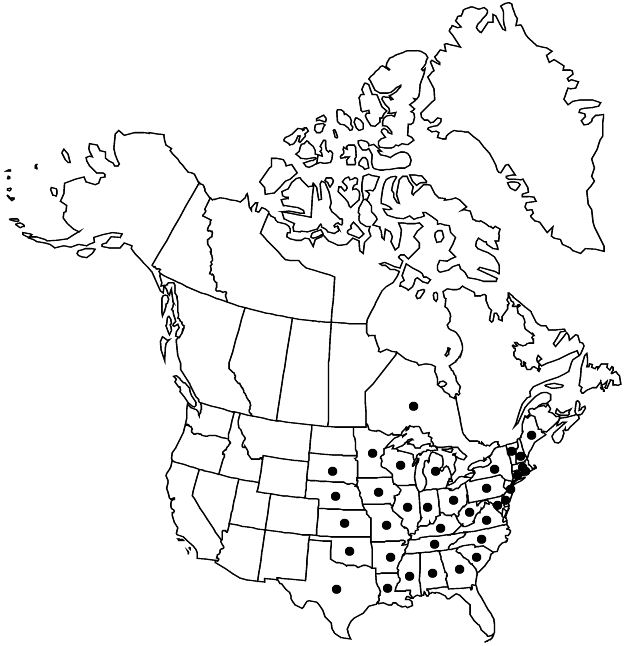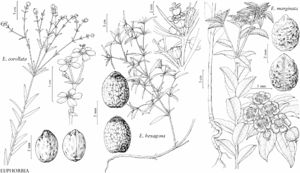Euphorbia corollata
Sp. Pl. 1: 459. 1753.
Herbs, perennial, with deep, spreading rootstock. Stems erect or ascending, usually unbranched, occasionally few branched, solitary or few, previous year's dead stems not persistent, 20–100 cm, glabrous or slightly pilose to villous. Leaves alternate, ascending; stipules 0.1–0.2 mm; petiole minute or absent; blade oblanceolate, obovate, or elliptic, 25–55 × 5–12 mm, base cuneate to rounded, margins entire, occasionally slightly revolute, apex rounded to subacute, abaxial surface glabrous or pilose to villous, adaxial surface usually glabrous, rarely villous; venation occasionally obscure on small leaves, midvein conspicuous. Cyathia in terminal pleiochasia, dichasial bracts occasionally whorled or rarely alternate; peduncle (1.5–)5–11(–13) mm (proximal to 70 mm), glabrous. Involucre campanulate, 1.2–1.5 × 1.2–1.5(–2) mm, glabrous or moderately puberulent (especially near glands); glands 5, green, reniform, 0.5 × 0.8–1 mm; appendages white, flabellate, 2.5–3.5(–4.5) × 2.5–3.2 mm, entire. Staminate flowers 20–25. Pistillate flowers: ovary glabrous; styles 0.8–1.4 mm, 2-fid at apex to 1/2 length. Capsules globose, 2.3–3 × 3.5–4.2 mm, glabrous; columella 2–2.5 mm. Seeds white or light gray, ovoid, 2.5–2.8 × 2.2 mm, with shallow and coarse depressions; caruncle absent.
Phenology: Flowering and fruiting early summer–fall.
Habitat: Prairies, open fields, upland woods, glades, barrens, borders of swamps, roadsides, disturbed sites.
Elevation: 0–1300 m.
Distribution

Ont., Ala., Ark., Conn., Del., Ga., Ill., Ind., Iowa, Kans., Ky., La., Maine, Md., Mass., Mich., Minn., Miss., Mo., Nebr., N.H., N.J., N.Y., N.C., Ohio, Okla., Pa., R.I., S.C., S.Dak., Tenn., Tex., Vt., Va., W.Va., Wis.
Discussion
Euphorbia corollata is morphologically variable and widely distributed across a large part of eastern North America. The species appears to be expanding its range, as adventive populations have been reported from disturbed habitats at the northern edge of its range in Maine, Massachusetts, Michigan, Minnesota, New Hampshire, South Dakota, and Vermont.
Selected References
None.
